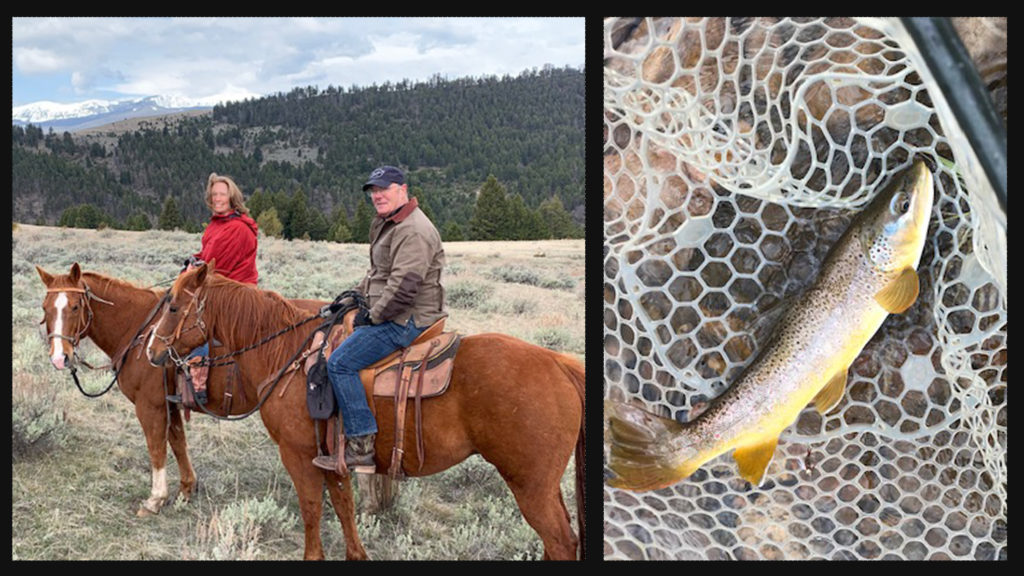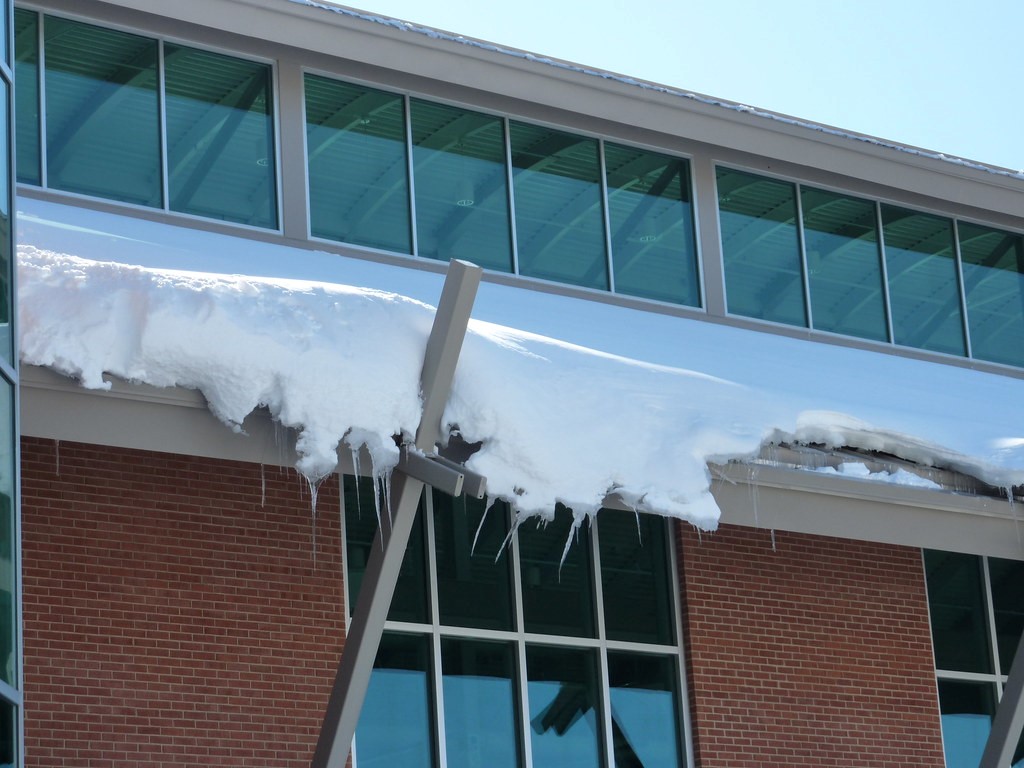I want to start off by saying that I am really enjoying writing these blogs! What a great opportunity to share acquired knowledge and re-connect with the industry. Thank you for reading, and thank you for your questions.
Two weekends ago, my wife and business partner, Sandy and I visited a ranch in Montana where we went horseback riding and fly fishing. What a gorgeous place “big sky country” is, full of wide-open spaces that really allow (almost force) you to slow down and to think. What did I think about during those moments of silence and vast beauty? Well…. snow guards, of course!

Let’s dig right in. First and foremost (I’ve said it before, and I’ll say it again), if you don’t have a sliding snow or ice problem, you don’t need to install snow retention devices. This may sound pretty obvious, and we routinely field questions about code compliance as it relates to snow retention. To my knowledge, there are only a couple of US communities that actually require rooftop snow management in the form of a building code. One of these communities is in Massachusetts and one is in Colorado. However, it is not a national building code. (As an aside, I’m a member of an ASTM committee that is working on establishing a standard for snow and ice accretion. I’m happy to discuss this with anyone who would like to reach out to me either via a comment on this post or an email to me directly at brian@alpinesnowguards.com).
Manage Snow and Ice to Protect People & Property
If you do have a snow and ice sliding problem, especially one that could release a sliding mass into places of egress, as the building owner you have a responsibility to address the problem and to protect people and property.

Snow Guard Design and Aesthetics in Highly Visible Areas
Simply stated, the design process is driven by the necessity. Let’s assume you have established a need. If the roof surface is highly visible and/or is a key part of the aesthetic appeal, most people (especially residential projects) don’t want to see the snow guards. I think it’s safe to say that homeowners and builders who install high quality roofing materials do so for both longevity and aesthetic appeal. For these reasons, pad-style snow guards are the most common and the most appealing snow retention option (to the building owner, anyway) for residential construction.
The challenge for the designer and the installer is in providing a snow retention system that meets both the functional requirements and the expectations of the person purchasing the snow guards. With this in mind, I recommend that you start big (pipe-style snow guards), educate the customer and work back into aesthetics as a compromise, if needed (pad-style snow guards).

Recommended Layouts
This past winter of 2018-2019, we gained additional insight and experience into how our recommended layouts for synthetic and non-porous shingle applications warranted some degree of revising. The following design guidance is the best starting point for all buildings.
Revisions went into effect on May 1, 2019
For roof pitches less than 7:12:
Pad-style snow guards alone are effective and will still release small amounts of snow and ice as the mass melts.
For roof pitches between 7:12 and 9:12:
Pipe-style snow guards should be used over all ingress and egress points and to protect items of value such as: vehicles, hot tubs, patio furniture, air handling units, expensive landscaping, etc.
For roof pitches greater than 9:12:
Pipe-style snow guards should be used everywhere snow management is needed. If more than one tier of pipe-style snow guards is required, pad-style snow guards may be used as supplemental snow management above the pipe-style system.

Supplement Pipe-Style Snow Guards with Pad-Style
Where needed, supplement pipe-style snow guards with pad-style snow guards to achieve 48” on center spacing.
In general, pipe-style snow guards should always be the first choice. When installed and used properly, pipe-style snow guards act as a barricade. Pad-style snow guards are a deterrent that manage (but do not completely prevent) the release of snow and ice.
Pipe-Style Rules of Thumb
- If the roof surface is not visible: Pipe-style snow guards
- When protecting points of egress: Pipe-style snow guards
- Protecting anything of value (i.e., gutters, cars, hot tubs, patio furniture, etc.): Pipe-style snow guards
- Ledge details: Pipe-style snow guards
- Surfaces that have very little friction such as glass, solar panels (we’ll delve into solar in a later post), metal, plastics (like thermal plastic membrane), shingles, tile, slate, stone and other cornices: Pipe-style snow guards
If and when the purchaser understands that pad-style snow guards are intended to add friction, thereby slowing a sudden release of snow and ice, they’ll also understand when the use of pad-style snow guards is appropriate. They (pads) work well when used as intended and in the proper quantities for the given pad.
The consumer needs to understand that certain weather conditions; sometimes suddenly high temperatures cause quick melt, or sometimes excessive snow accumulation will overwhelm pad-style snow guards. When this happens, the pads will serve little purpose. There are exceptions to this rule, such as installations on asphalt shingle roofs, or roofs that are 7:12 pitch or less.
Alpine SnowGuards has had a great deal of success using pipe-style systems at the eave-edge of a building and then supplementing the pipes with pad-style snow guards upslope, when multiple tiers of snow guards are needed.

Of course, there are always situations that arise requiring custom snow retention solutions. These needs may be driven by aesthetics, or maybe there are size constraints, attachment constraints, historic building requirements, etc. If your project has special requirements and/or you would like guidance, please reach out to us. Alpine manufactures more custom snow retention solutions than any other company in the business.
Until next time,
Brian Stearns
President & Founder, Alpine SnowGuards
We keep snow in its place
888.766.4273
Sign up to start using our Online Project Calculator for an immediate layout and project pricing!
Subscribe to our monthly newsletter and keep up on the latest industry and Alpine news, products, and upcoming events!
Alpine SnowGuards designs, engineers, and manufactures snow management systems from our facility in Morrisville, VT. We work closely with leading roofing contractors, engineering firms, developers, solar installers and roofing manufacturers to ensure we deliver quality products that do what we say they’ll do. Alpine SnowGuards can help a building qualify for LEED® credits.
